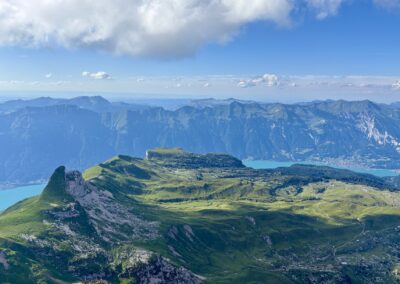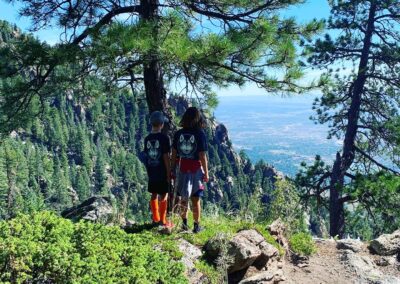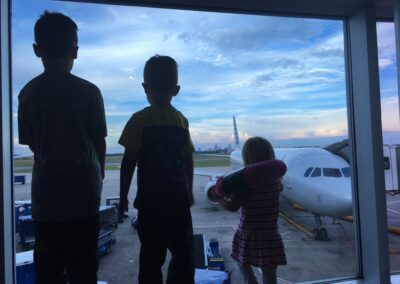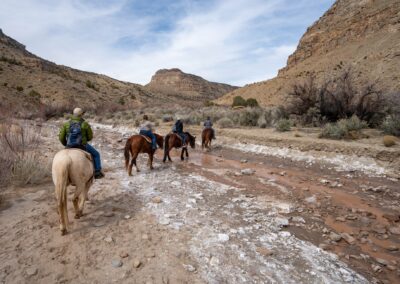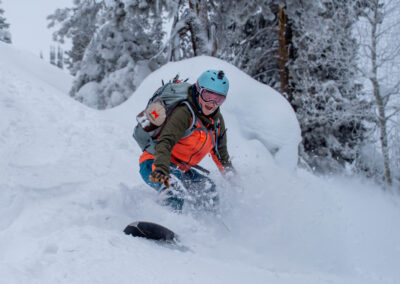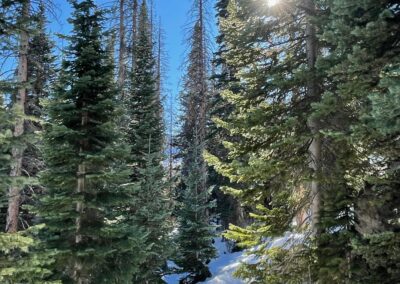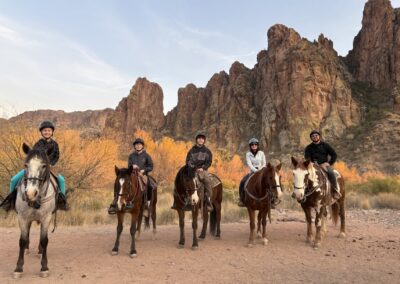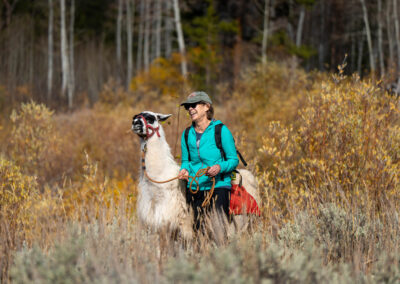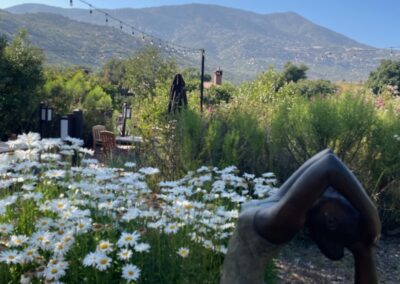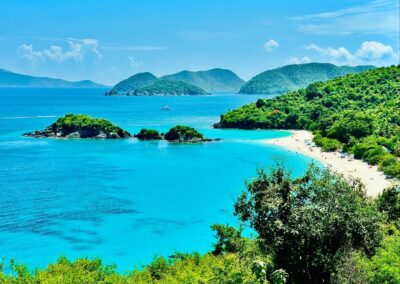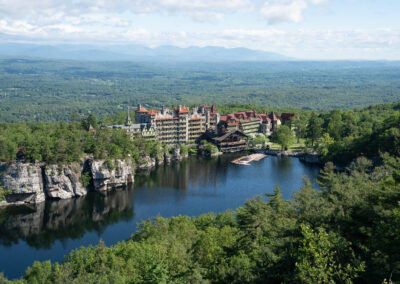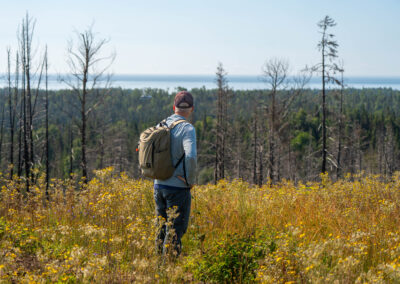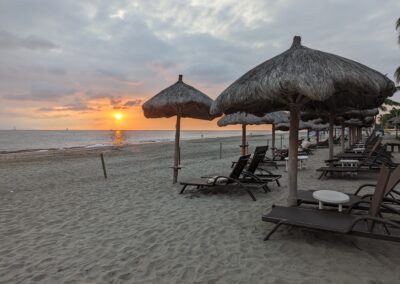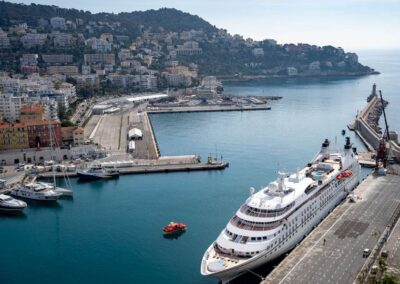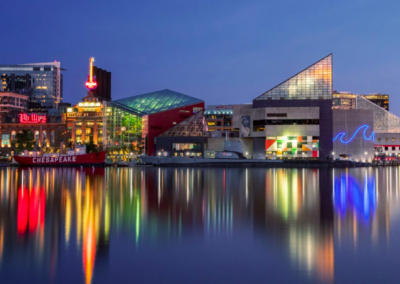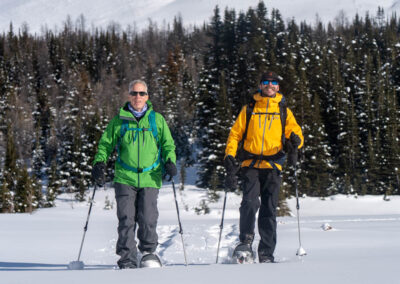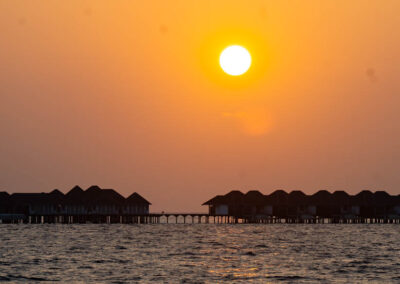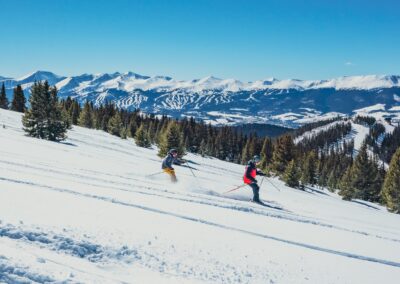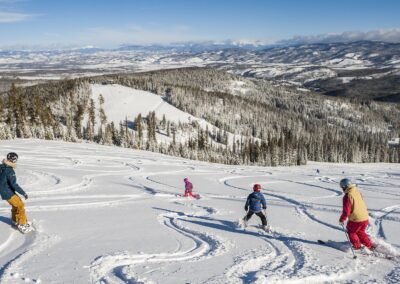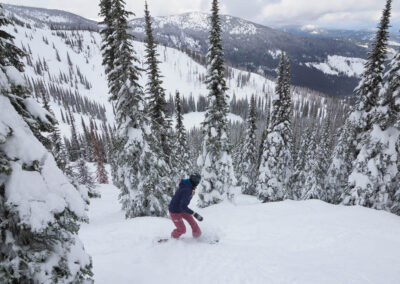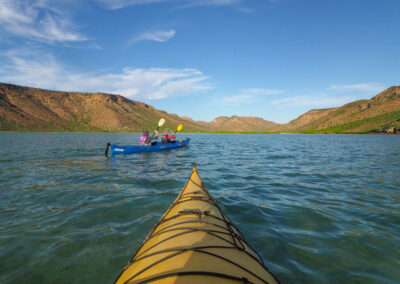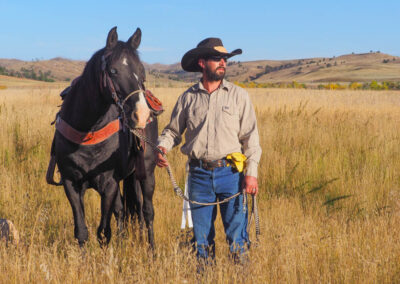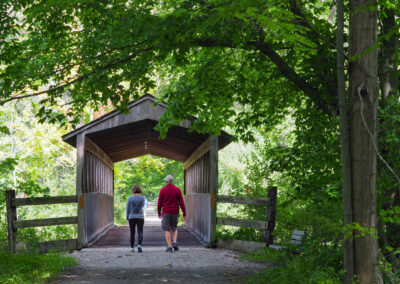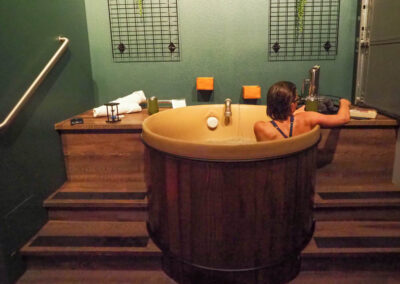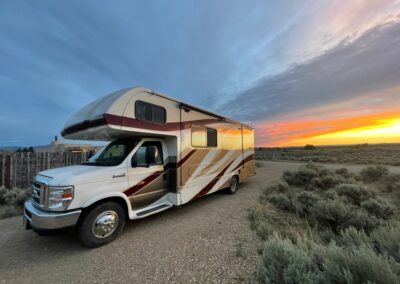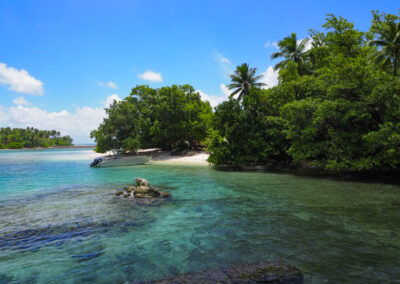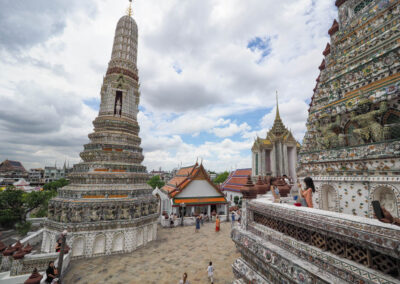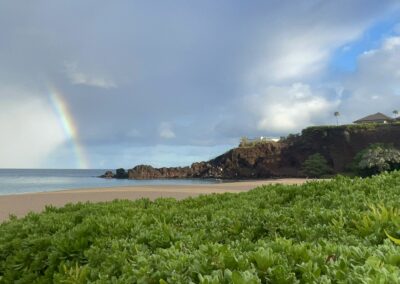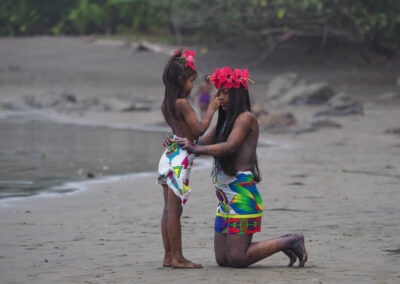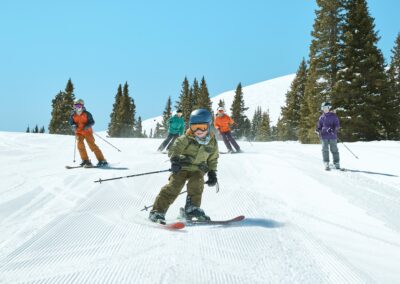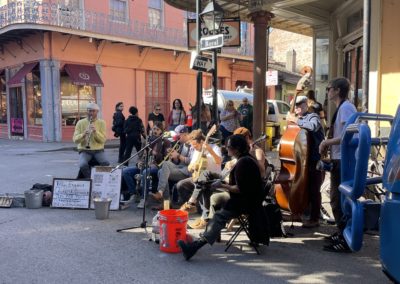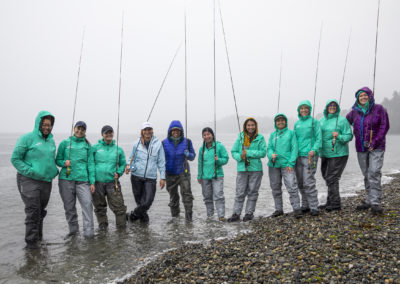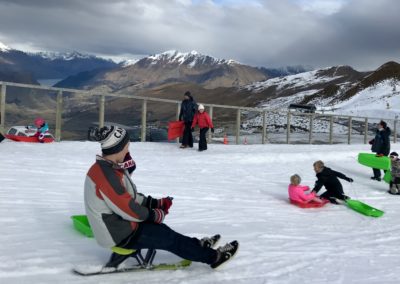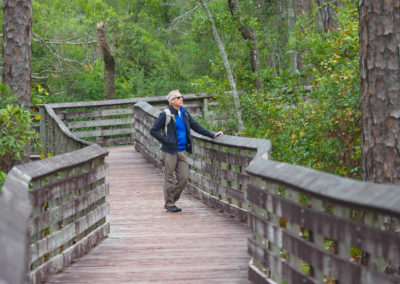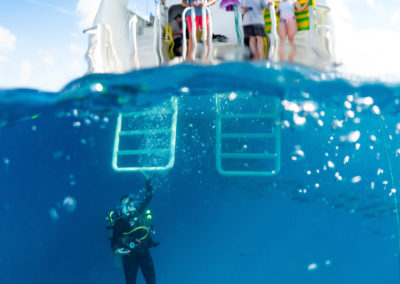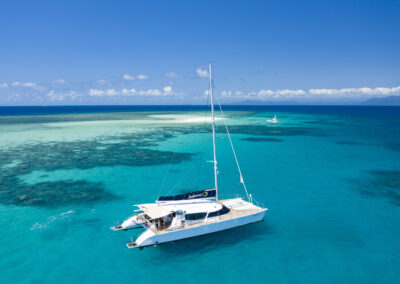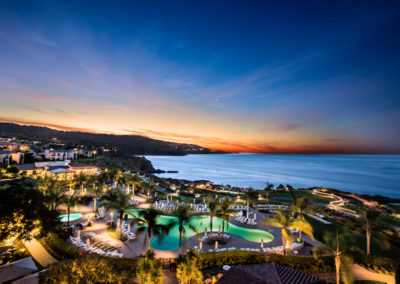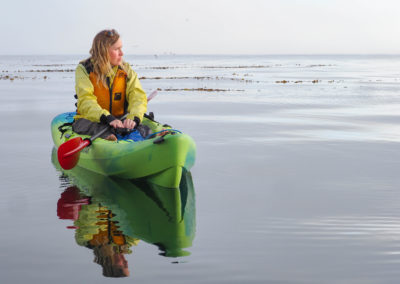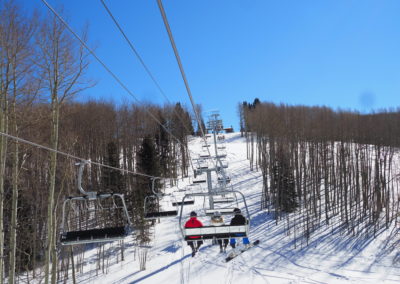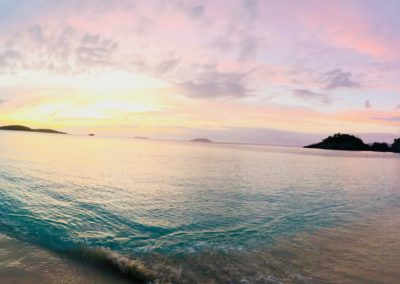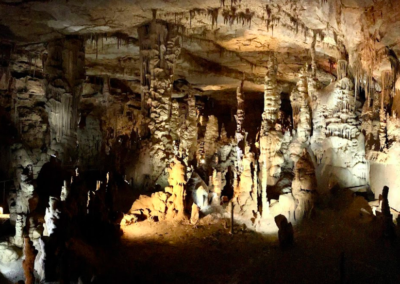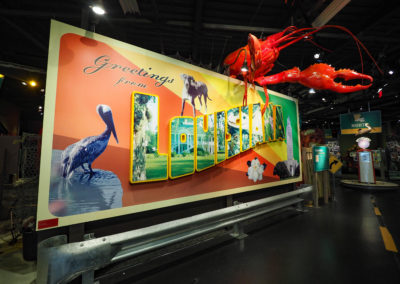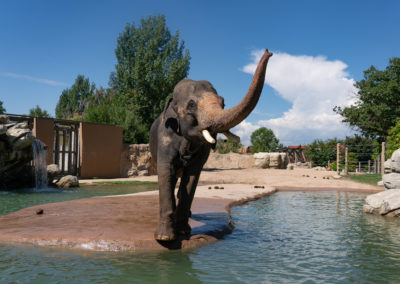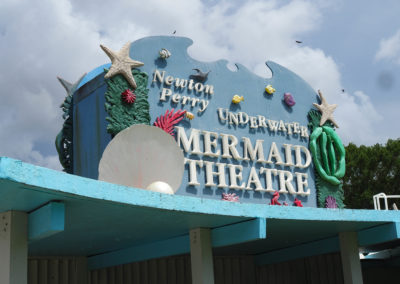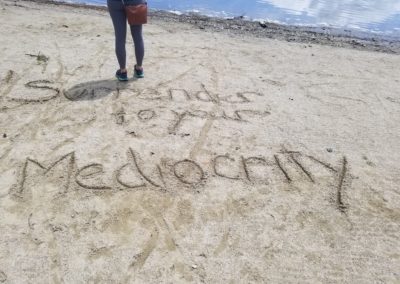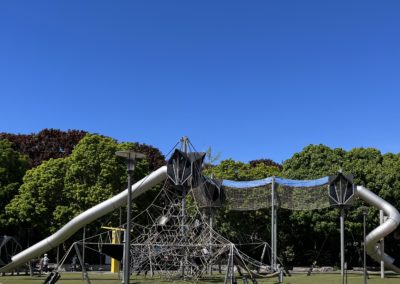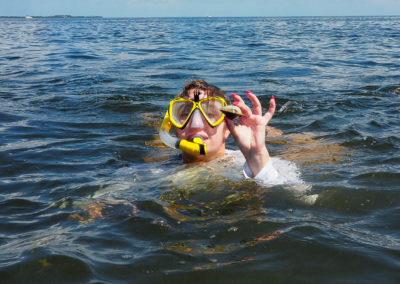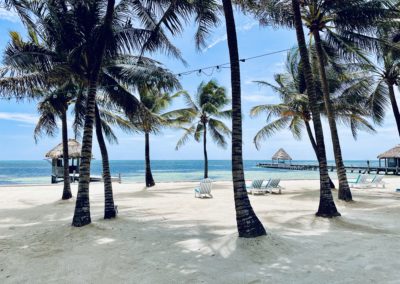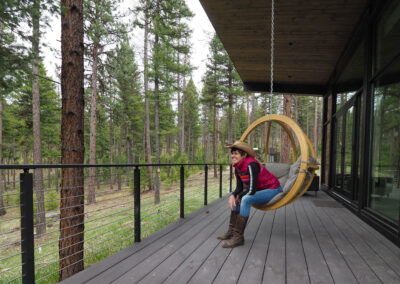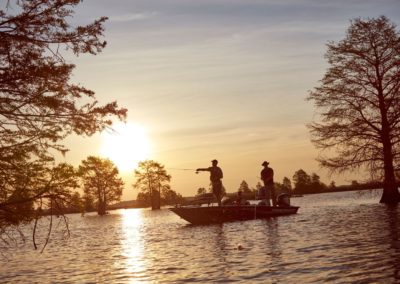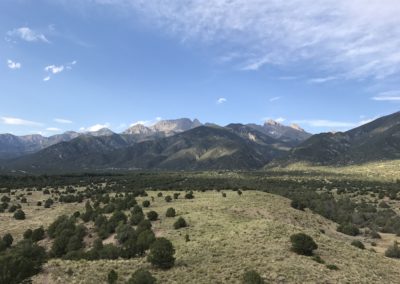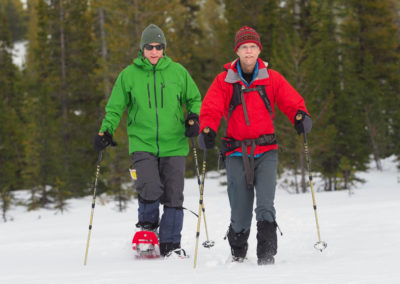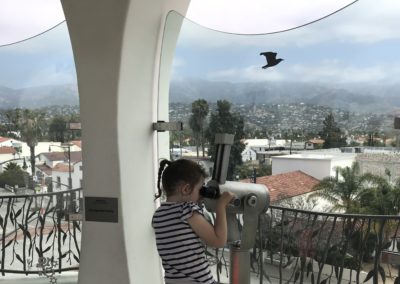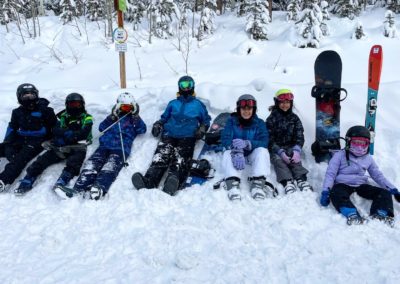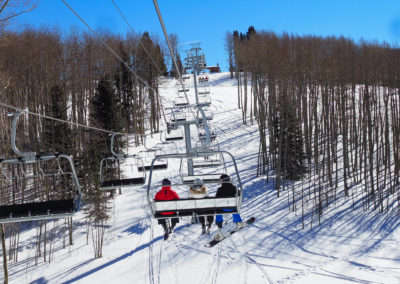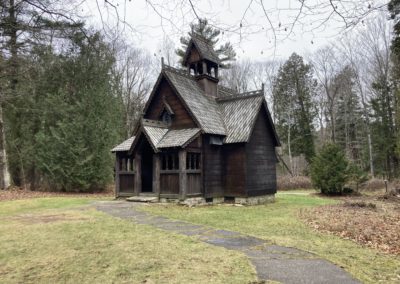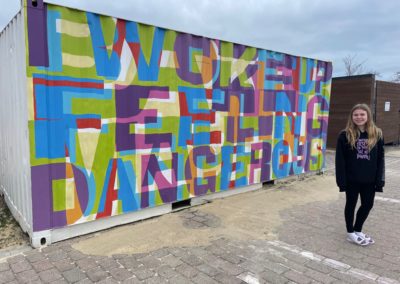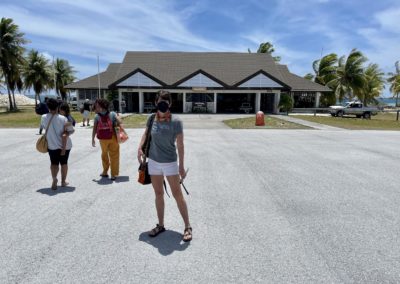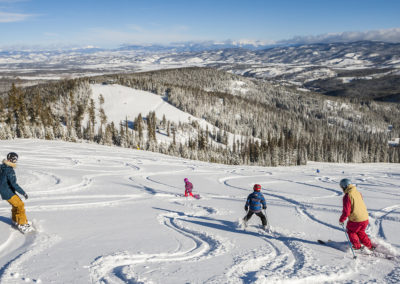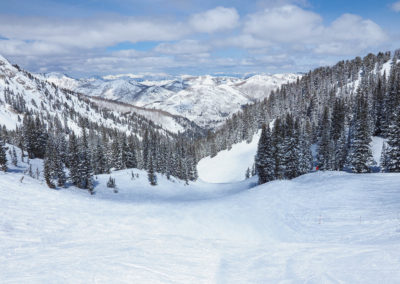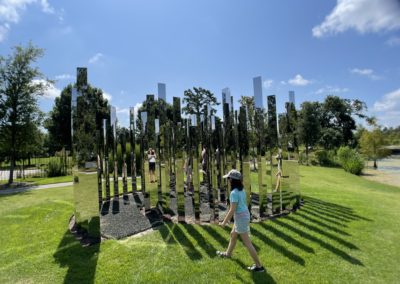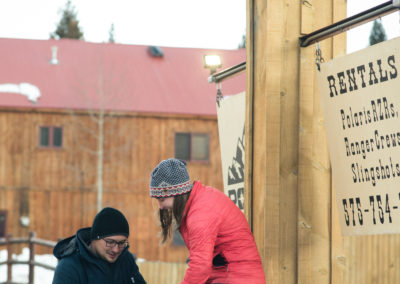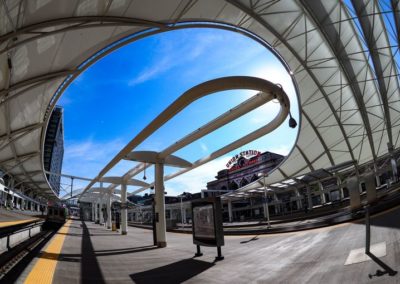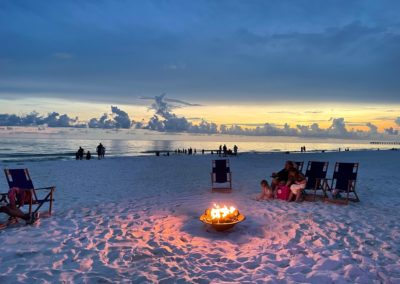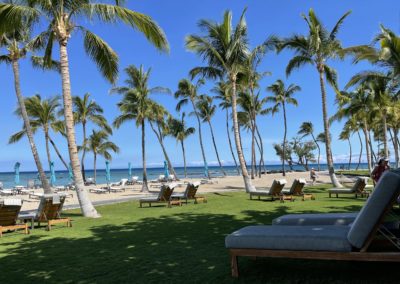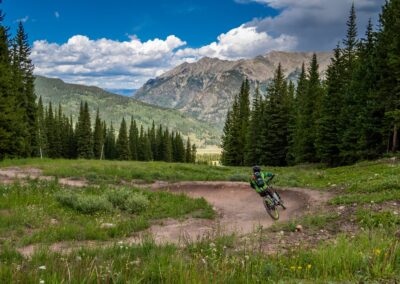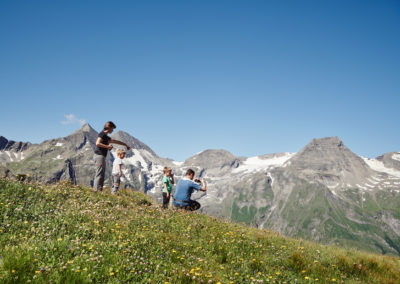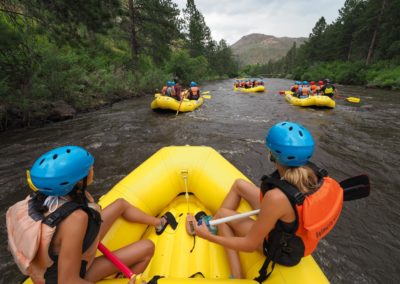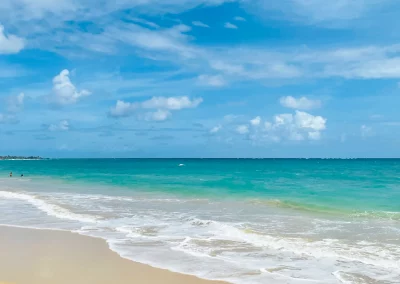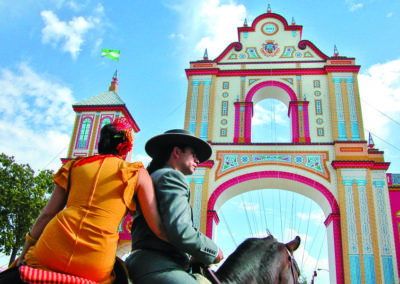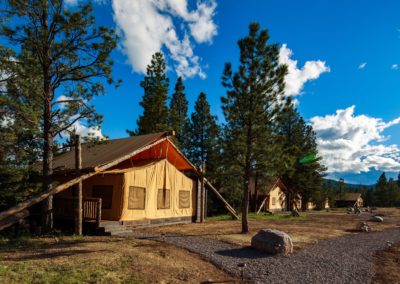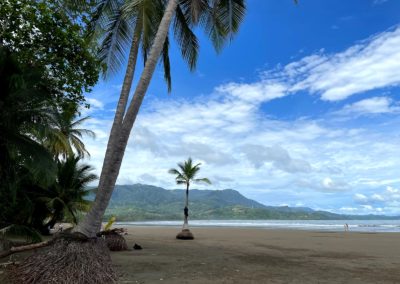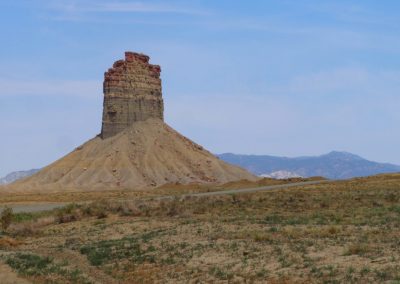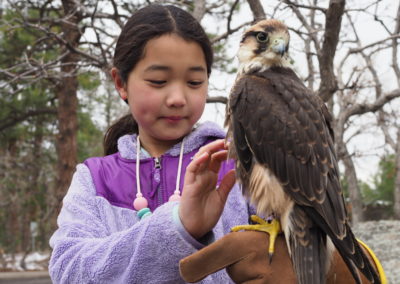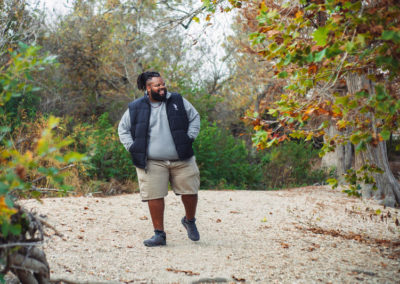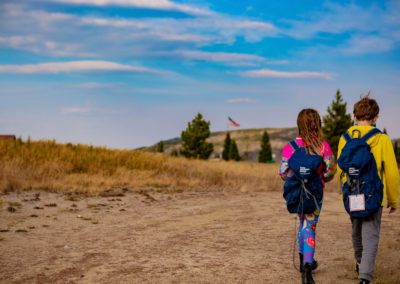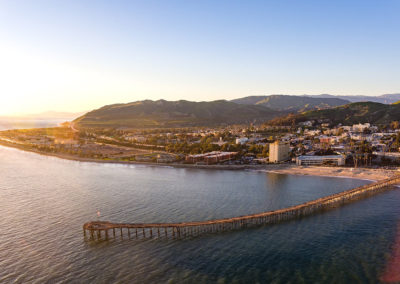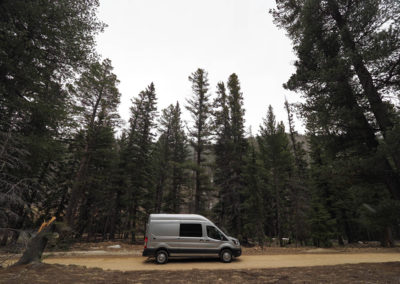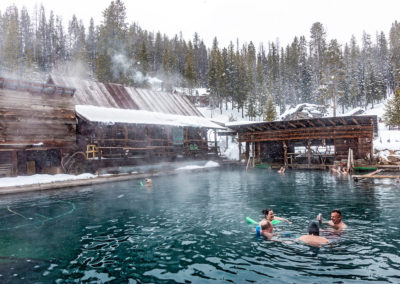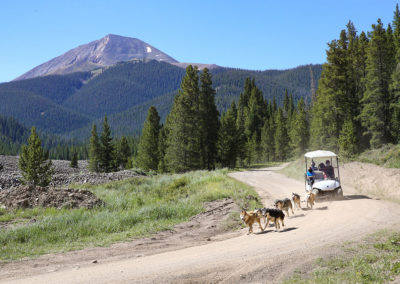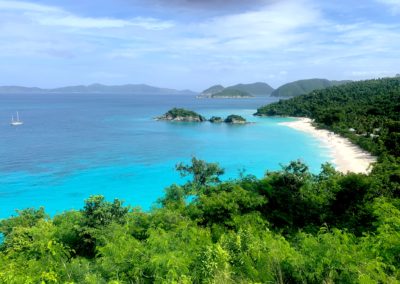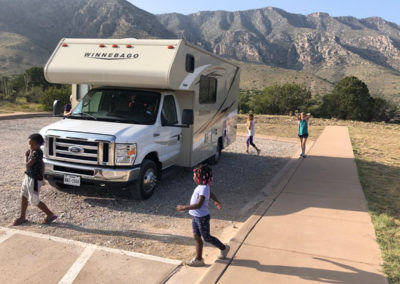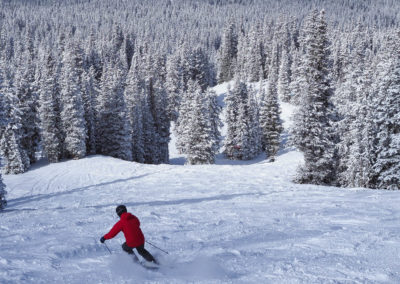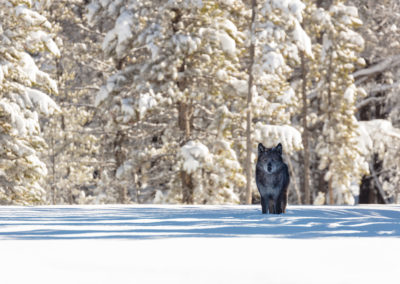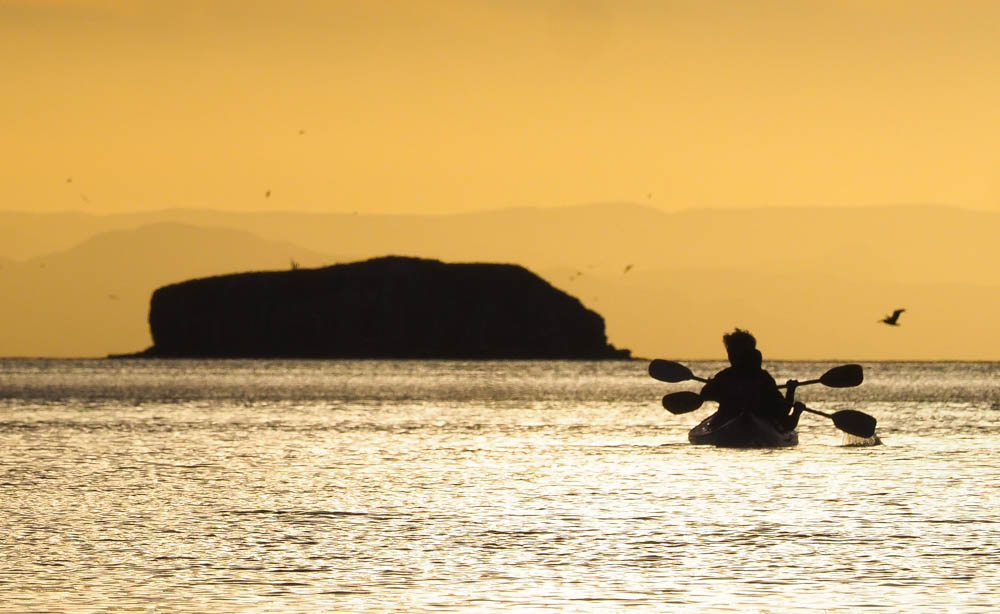
A kayaker paddles into the sunset at Isla Espiritu Santo, in Baja California Sur. Pam LeBlanc photo
Above me, a beagle-sized sea lion pup pinwheels through the blue water of the Sea of Cortez. A second darts past with a seagull feather in its mouth, and two more nibble on the tips of the fins I’m wearing.
Scuba diving with a colony of sea lions at Isla Ilotes, a rocky outcropping at the north end of a string of islands near La Paz, Mexico, feels a little like joining recess at the local elementary school. Although my school days are long gone, I’m still having a blast.
My visit is part of a nature-focused, five-day trip to Baja California Sur, in Mexico. I’m traveling solo, and my itinerary includes a night in the artists’ enclave of Todos Santos, two nights of camping on Isla Espiritu Santo, and a night at the posh Baja Club in La Paz before I head home. But this moment, with dozens of sea lions swirling around me, tops the highlights reel.
Related: Eat, Sleep, Dive: A live-aboard dive trip to the Turks and Caicos
My guide has warned me not to grab or chase the creatures, but to let them come to me. And they do.
As I swim slowly into an underwater cave where a dozen animals have gathered, a sleek brown pup with blue marbles for eyes nips lightly on the sleeve of my wetsuit. I spin around, and another tugs on the scarf wrapped over my head. I laugh underwater, and they swim into the stream of diamond-like bubbles I exhale.
The sea lions seem thrilled to have visitors.
A night in Todos Santos in Baja California Sur

Los Colibris Casitas is perched on a hillside on the outskirts of Todos Santos, in Baja California Sur. Photo by Pam LeBlanc
To get here, I caught a direct flight from Austin to the main airport in Cabo San Lucas. Then I made the hour-and-15-minute drive to the artists’ enclave of Todos Santos, where I stayed the night at Los Colibris Casitas.
From the patio in front of my room at the boutique hotel, perched high on a bluff on the outskirts of town, I can see waves crashing onto the beach far below. Birds circle a fresh water estuary, and a forest of palm trees sways in the breeze.
I want to get a better sense of my surroundings, so Sergio Jauregui, the owner of Los Colibris and Todos Santos Eco Adventures, volunteers to give me a tour.

Todos Santos is an artists enclave in Baja California Sur, Mexico. Pam LeBlanc photo
We drive to the town’s center, where he gives me a history lesson as we walk the streets. A mission was built here in 1723, and the last battle of the Mexican-American War was fought nearby in 1848. For the next century, farmers grew sugarcane in the area, but when the town’s main spring dried up in 1950, people moved away.
Things changed again in 1981, when that spring revived. The government paved a road into town, bringing tourists. American surfers sought it out as an alternative to California’s crowded beaches. Then artists moved in, drawn by the golden light.
Today Todos Santos supports 27 galleries, several gourmet restaurants, and a smattering of hotels. The famous song by The Eagles comes to mind when we walk past a pale orange building called Hotel California. We admire murals in the cultural center, duck into an art gallery where tiny images of dancers twirl across colorful canvases, walk across the plaza, and poke our heads into a historic mission.
Onward to Isla Espiritu Santo, part of Baja California Sur

Todos Santos Eco Adventures leads guided camping trips to Espiritu Santo. Pam LeBlanc photo
The next day, I catch a ride to La Paz. The hour-long trip takes me past mountains and thickets of tall cactus, where birds somehow manage to perch without stabbing their toes.
It’s start day for the Baja 1000 car race, a 1,000-mile off-road scramble through the desert that draws souped-up dune buggies, tricked-out pickup trucks and beat up Volkswagen Bugs. I watch a few roll down the starting ramp and speed down the oceanfront boulevard, but I’m more interested in what lies beyond.
From La Paz, it takes about 45 minutes by boat to reach Isla Espiritu Santo, a popular destination for eco tourists. Along the way, we pass a noisy colony of blue-footed boobies. The birds, which show off their teal-colored feet to impress the opposite sex, look almost cartoonish. Frigate birds, with long forked tails and hooked bills, wheel overhead. Rust-colored hills bristle with cardon cacti, their long prickly arms extended skyward, and layer-cake cliffs jut into the sea.
RELATED: Slowing down to soak in the beauty of Big Bend
The boat pulls ashore in a cove, and we hoist our duffel bags onto the beach, where a crew has already set up tents. A bucket of water and a rug the size of a picnic table are arranged in front of each one, so we can rinse our feet before stepping inside. This is glamping, after all, and instead of a sleeping bag on the ground, we’ll be snoozing on real mattresses with sheets and pillows.
Camp Cecil

Guests dip their toes in the surf at Camp Cecil on Isla Espiritu Santo. Photo by Pam LeBlanc
Our guide, Andrea Hinojos, gives us a tour of Camp Cecil, another arm of Todos Santos Eco Adventures. At the far end of the cove stands a portable bathroom. There’s a solar shower, too, and, at the other end of the beach, a seating area complete with a cushy sofa. While the kitchen staff works on lunch, Hinojos briefs us on camp life.
We can use the kayaks or swim when we want, but hiking isn’t allowed past the dunes. But the ocean is the focus, anyway.

The sun rises over Camp Cecil on Espiritu Santo. Pam LeBlanc photo
That first night, just three other guests shared the camp with me ––- Joe Oliver and Christine McEnery of Carmel Valley, California, and their friend Rob Goldman of Philadelphia. We hit it off immediately, sitting on beach chairs with our toes dangling in the surf and admiring our surroundings.
McEnery tells me she was looking for a natural experience when she decided to come to the camp.
“I wanted unspoiled nature and it’s not so easy to find that,” McEnery says. She loves outdoor adventure, just like me. “It’s the visuals – looking at the desert in one direction and thinking you’re in the (American) Southwest, and in the other direction it looks like the Caribbean.”
Her husband agrees. “It’s such a departure from work-a-day life of staring at a computer screen,” Oliver says. “It’s such a treat to see great views and have them untouched by developers.”
Diving into the Sea of Cortez
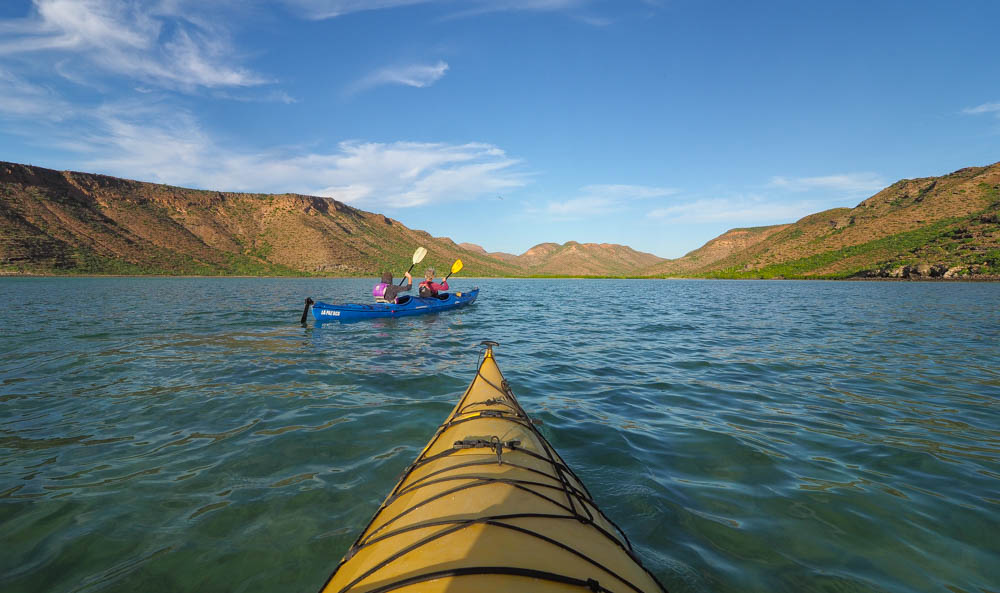
Kayakers glide along a cove on Espiritu Santo, near La Paz, Mexico. Pam LeBlanc photo
The ocean around the island is part of a marine park, and we spend a lot of time exploring it. We snorkel among pufferfish and angelfish. Sea turtles the size of car tires glide beneath us. I dive down to get a closer look at a starfish.
One evening, we push off in kayaks, and paddle past mangroves flush with chirping birds. I can’t take my eyes off a pair of pelicans sitting on a rocky island as the sun sets behind them.
“It’s very beautiful,” Hinojos says, then references ocean explorer Jacques Cousteau, who spent time in the area. “It’s secluded. There are no people living here so it’s like a virgin island in the ‘Aquarium of the World.’”
And the food is far from what I’d eat on a regular camping trip. Instead of freeze-dried meals or hotdogs, chefs bring out trays of grilled fish, nachos, ceviche, and flank steak. For breakfast we have huevos rancheros and fresh fruit, and every evening we sample a new cocktail and snacks.
A night in La Paz
I love ocean swimming so much that the guides arrange one last outing before I head back to the mainland.
I leave my snorkel in the boat and dive down deep, touching the white sand on the bottom. It’s here, with the turtles and angelfish, that I feel most at home.
But finally, my water taxi arrives. I towel off and let the wind dry my hair as we speed back to civilization. In La Paz, I check into the Baja Club, then take some time to stroll along the beachfront. That night, I climb the stairs to the rooftop bar, where I sip a margarita and stare at the islands in the distance.
I’m officially spoiled.
If You Go

Getting there:
American Airlines offers a non-stop flight from Austin to San Jose del Cabo, the nearest major airport to La Paz.

Stay:
In Todos Santos, stay at Los Colibris Casitas. Book a multi-day trip to Camp Cecil on Isla Espiritu Santo through Todos Santos Eco Adventures. In La Paz, pamper yourself at Baja Club Hotel.
Do:
Scuba dive with sea lions at Isla Illotes. I went with The Cortez Club. Camp, hike, birdwatch, kayak and snorkel at Camp Cecil.
Eat & Drink:
I loved the atmosphere at the bar at Baja Club in La Paz, and the on-site restaurant serves excellent flank steak and fresh fish.

Pro Tip:
If you’re traveling with others, divide your camera gear among each other for the inbound flight. Just two cameras (or lenses) per person are allowed free of charge, and you might be charged taxes on any gear beyond that. I carried in a camera, a GoPro and two extra lenses and had to pay $154 in taxes – a surprise I hadn’t expected.








